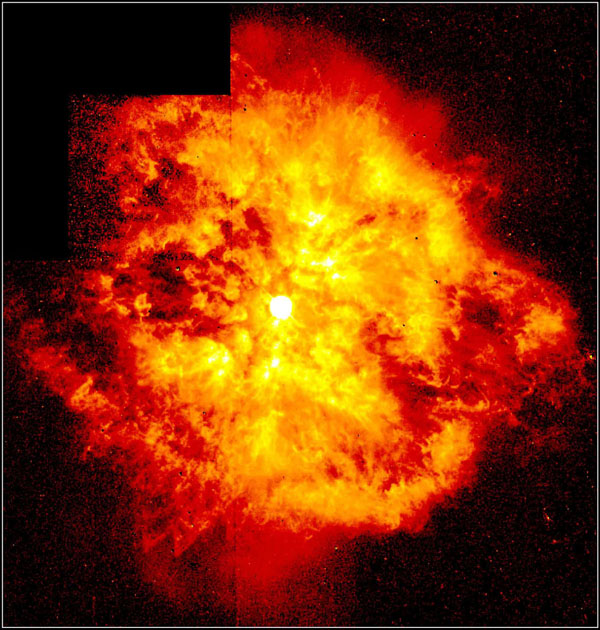Before observations of dark energy, cosmologists considered two scenarios for the future of the universe. First, if the mass density of the universe were greater than the critical density, then the universe would reach maximum size and then begin to collapse. It would become denser and hotter again, ending with a state that was similar to that in which it started – a big crunch.
Second, alternatively if the density in the universe were equal or below the critical density, the expansion would slow down, but never stop. Star formation would cease as all the interstellar gas in each galaxy is consumed, stars would burn out leaving white dwarfs, neutron stars and black holes. Very gradually, collisions between these would result in mass accumulating into larger and larger holes. The average temperature if the universe would asymptotically approach absolute zero – a big freeze.
Modern observations of accelerated expansion imply that more and more of the currently visible universe will pass beyond our event horizon and out of contact with us.
The ΛCDM model of the universe contains dark energy in the form of a cosmological constant. This theory suggests that only gravitationally bound systems, such as galaxies would remain together as universe expands and cools.






